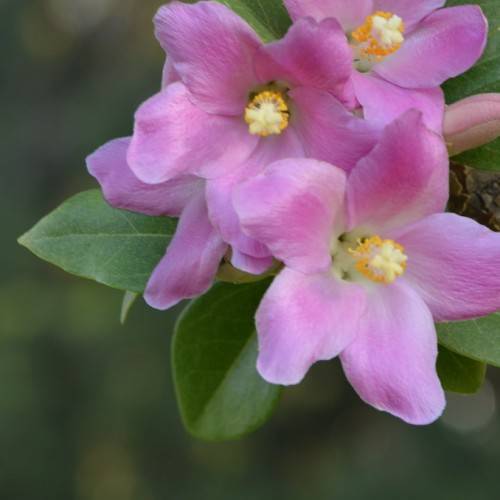
Norfolk Island hibiscus
Lagunaria patersonii
Cycle:
Perennial
Watering:
Average
Hardiness Zone:
9 - 11
Flowers:
Flowers
Sun:
Full sun
Fruits:
Fruits Ready In Summer
Edible:
Yes
Leaf:
Yes
Growth Rate:
Low
Maintenance:
Low
Salt Tolerant:
Yes
Thorny:
Yes
Invasive:
Yes
Care Level:
Medium
watering
Water Norfolk Island hibiscus deeply and regularly, about once a week. Whether in a pot or planted in the ground, the soil should remain drained yet slightly moist at all times. Waterlogging should be avoided as it will cause the plant's roots to rot. Depending on climate conditions, more frequent watering (e.g., bi-weekly) may be necessary during periods of high temperatures or drought. Always check the soil before watering to ensure it is not too wet. If the surface feels dry to the touch then give the plant a deep soaking. It is important not to let the plant dry out completely as it may suffer from drought stress. Do not be tempted to over water as this could kill the plant.
sunlight
Norfolk Island hibiscus (Lagunaria patersonii) grows best in full sun and requires at least 6-8 hours of direct sunlight each day. This plant species can tolerate some late afternoon shade, however, it is best to keep the plant in an area that receives the fullest amount of direct sunlight possible. The sun is most important for the health of this species. If your plant is not getting the adequate amount of sunlight, it may not bloom. During the summer months, take extra care to provide the best air circulation and avoid over-watering that can lead to foliar diseases.
pruning
Norfolk Island hibiscus should be pruned twice during the spring and summer months. During the first pruning, early to mid-spring, the plant should be cut back by about 1 third of its size. Before pruning, it is important to remove any dead or damaged branches. This will ensure that the plant is healthy and will put less stress on the pruning process. During the second pruning, usually at the end of summer, the plant should be cut back by half its size. This second pruning is used to maintain the hibiscus' desired size and shape. Pruning should not take place during the cold winter months when the plant is dormant.
